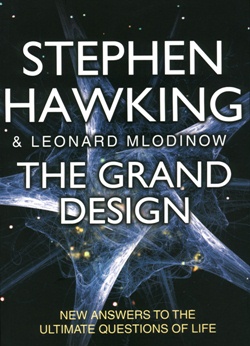A joint effort with The Grand Design written by Stephen Hawking and Leonard Mlodinow (ISBN 978-0-593-05830-5, Bantam Press 2010). It also has a subtitle “New Answers to the Ultimate Questions of Life”. And when you think about it, that is a very far-reaching ambit.
With the Quantum Theory being involved, and Scientist Stephen Hawking the principal author, one expects that the language will be beyond the common man, but nothing could be further from the truth. “Quantum theories can be formulated in many different ways, but what is probably the most intuitive description was given by Richard (Dick) Feynman, a colorful character who worked at the California Institute of technology and played the bongo drums at a strip joint down the road.” I warm to people like that!

However, if you think that the Quantum theory has it all. Think again, says Hawking, and meet the M-Theory, which Hawking states “may offer answers to the question of creation.”
As well as dealing with today and tomorrow, Hawking also delves into the past, bringing up the theories put forward by Pythagoras (580-490 BC) and showing how they integrate with today’s earth-shatterers, and Democritus (460-370 BC) who postulated the existence of atomic particles.
The light-hearted approach continues with Bishop Tempier of Paris who published a list of 219 “errors” in natural laws at the behest of Pope John XXI, because they interfered with God’s omnipotence. “Interestingly, Pope John was killed by the effects of the law of gravity a few months later when the roof of his palace fell in on him.”
As the book continues towards today, Hawking writes, “In the first 2000 years or so of scientific thought, ordinary experience and intuition were the basis for theoretical explanation. As we improved our technology and expanded the range of phenomena that we could observe, we began to find nature behaving in ways that were less and less with our every day experience.” As you continue in today’s science, you meet quarks and Planck’s Constant leading through to the comparison between Newtonian physics and Quantum physics. And of course, Einstein gets his rightful place as well.
I found this book to be absolutely fascinating. Written in a language that I could understand, even if at times I would have to take Hawking’s word as gospel, even if not directed by the concept of “God”. An example of the language comes with the mention of the British scientist Michael Faraday who in the mid 1800’s gave us the concept of ‘force fields’. Hawking writes, “These days, thanks to books and movies about bug-eyed aliens and their starships, most people are familiar with the term, so maybe he should get a royalty.” But be prepared to meet baryons and mesons and the Large Hadron Collider in Geneva and the Hubble telescope.
Well bound, excellent quality paper stock, a delight to hold and an even greater delight to read. If you have any desires to try and understand ‘more’, then this book at B. 650 is a veritable bargain. It is not a quick read, but a thought-provoking scientific treatise superbly written. Get it.




